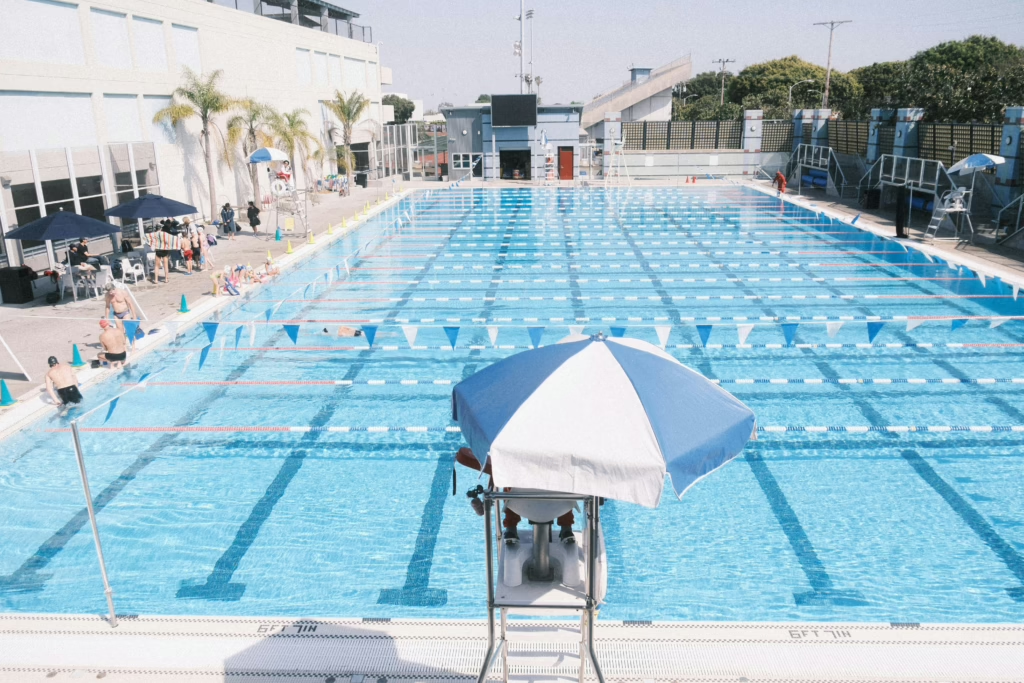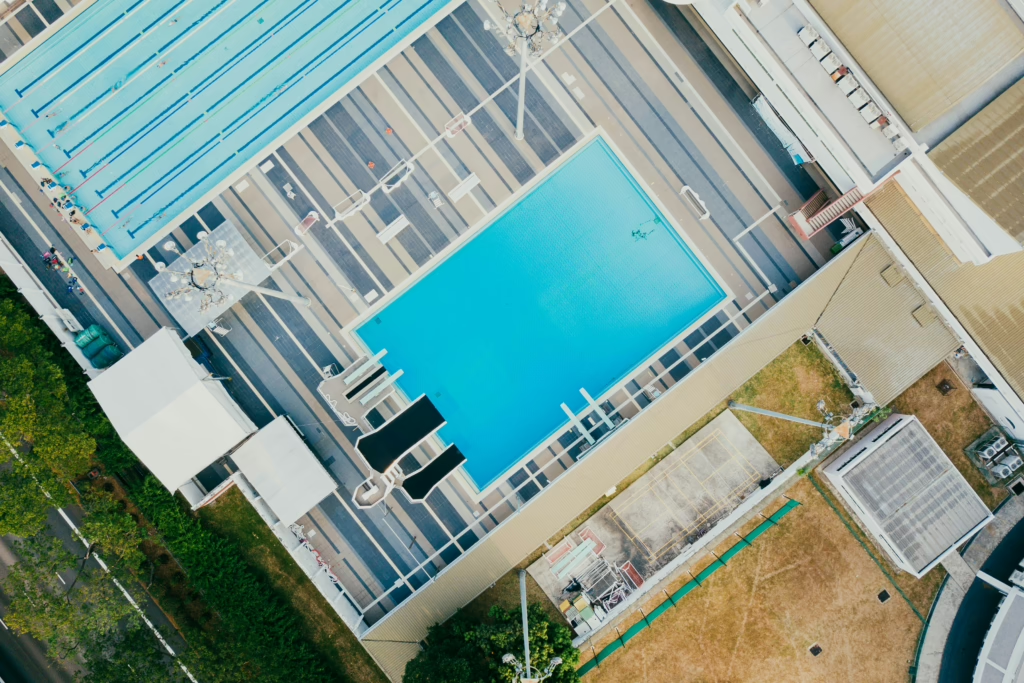If you’re thinking about investing in a swimming pool, you’re in for an exciting time. Of course, you’ll need to know a few things before you get started.
Pool Types: In-Ground vs. Above-Ground
When you talk about swimming pools in San Diego, there are two broad types. The most common is the in-ground pool. However, above-ground pools are also popular, thanks in large part to their lower price point. If you haven’t yet invested in a pool, you’ll want to know how each type stacks up.
In-Ground Pools for San Diego Homes
In-ground swimming pools are the most popular with San Diego residents. These are permanent pools (although they can be filled in). Most of them are made from concrete or gunite and are poured or “shot” round around a mold or frame. Iron rebar and an underlying metal form provide reinforcement and support during the installation process.
However, vinyl in-ground pools are also very popular. That’s because the pools are usually more affordable and don’t require as much time to install (they’re often ready to use in just a week, whereas a gunite/concrete pool can take several weeks to build and cure).
In-ground pools give San Diego homeowners the most options in terms of layout, design, and extras. They can be round, square, octagonal, or freeform, and they can include a dizzying array of additional features, like waterfalls, slides, fountains, and more. Note that this really applies more to concrete/gunite pools. Vinyl pools are more limited in terms of shape and size, as well as what you can add to them.
You’ll also find fiberglass pools available in San Diego. Where concrete pools are poured on-site and vinyl liner pools require on-site building, fiberglass pools arrive ready to install. In most cases, you’ll just need to excavate the installation site and install the plumbing, then the pool is set in the ground and the piping is connected. Fiberglass pools usually cost more than either concrete or vinyl liner pools in San Diego, and they have fewer size and shape options to choose from.
Above-Ground Pools for San Diego Homes
The other swimming pool type for San Diego homeowners is the above-ground pool. These are great choices for anyone who wants a pool installed and ready to use in a hurry, as well as for homeowners on a tight budget. However, there are some important differences to in-ground pools that you should be aware of here.
First, above-ground pools are always considered temporary, even if you build a deck and add fencing. They’re designed to be easy to remove – just drain and take it apart. Because they’re temporary, above-ground pools usually don’t add value to the home. However, they’re less likely to make someone who doesn’t want a pool balk at buying your home because they’re easily removed, unlike in-ground pools.
Above-ground pools are usually only available in round or oval shapes. However, you can find a range of sizes to fit your yard and needs. Note that they’re usually only 48 or 52 inches deep, so they’re not suitable for diving.
Given their comparatively low price, an above-ground pool might be a good way to test whether owning a swimming pool is the right choice for you. They come with similar care and maintenance needs to in-ground pools, and you’ll get plenty of practice refilling to combat water loss due to evaporation. If you love the experience, you can upgrade to an in-ground pool.
Of course, no matter what type of pool you decide to install, you’ll need to keep the water safe for swimming. That usually means adding chlorine, but saltwater pools are increasingly popular around San Diego for many reasons.
Pool Types: Saltwater vs. Chlorine
No matter what type of swimming pool you install at your San Diego home, you’ll need to make sure that the water is clean, clear, and safe for swimming. In the past, that has meant treating it with chlorine. Today, chlorine pools remain the most common option, but saltwater pools are catching up in popularity.
Chlorine Pools
Chlorine can be added to the swimming pool of your San Diego home in a couple of ways. Shock treatments, tabs, and liquid chlorine added directly to the water are three popular options. It’s easy to measure and add, and it’s also easy to adjust based on a chemical analysis of your water’s chemistry.
Saltwater Pools
Contrary to popular belief, saltwater pools aren’t free of chlorine. They just use less of it, and it’s added to the water differently. Saltwater pools are equipped with a generator that creates chlorine from salt, adding it directly to the pool water without you needing to pour it in or use a floater to allow tabs to dissolve.
Pros and Cons to Know
If you’re thinking about installing a new pool at your San Diego home or converting your existing pool to saltwater, you’ll want to know the pros and cons of both systems.
Pros of Saltwater Systems
- Use less chlorine, so they’re less harsh on skin, hair, and eyes
- Lower chlorine levels make them more environmentally friendly.
- Require less maintenance
- Require lower levels of balancing chemicals
- More affordable over the long term
Cons of Saltwater Systems
- Salt is corrosive, particularly for metal and stone
- More expensive initially
- Requires 24-hour operation, so their energy costs are higher
Pros of Chlorine Pools
- Lower upfront costs
- Less risk of corrosion
Cons of Chlorine Pools
- Harder on skin, hair, and eyes
- More environmentally damaging
- Require more balancing chemicals
- Require more frequent maintenance and care
- Chlorine must be stored safely
Not sure which is right for you? Get in touch with the experts at PoolLogic. We can help you decide and even install your system. Of course, we’re also happy to maintain your San Diego pool, too. Give us a call at (619) 913-9335.



